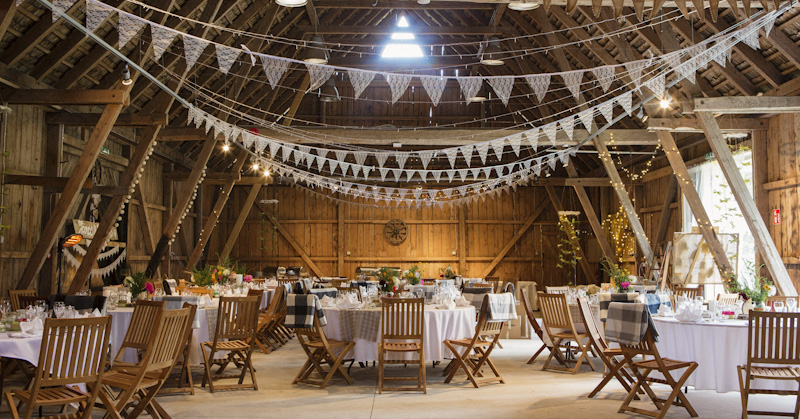Barndominiums Vs. Typical Residences: an In-depth Comparison of Way Of Living and Performance
The decision between barndominiums and traditional homes includes various factors, consisting of lifestyle choices and useful needs. Barndominiums are defined by their open layouts and versatility, frequently appealing to those that focus on common living and versatility.
Review of Barndominiums
Barndominiums, a novel real estate pattern acquiring popularity throughout different areas, blend the rustic appeal of barn-style architecture with the performance of contemporary space. These one-of-a-kind frameworks typically consist of a steel or timber framework, combining open layout and high ceilings with energy-efficient features. Often positioned on large rural buildings, barndominiums use home owners the chance to delight in a serene way of life while supplying sufficient room for various activities.
The convenience of barndominiums expands beyond their aesthetic appeal; they can work as both living quarters and useful areas for pastimes, workshops, and even little organizations. Their adaptive layout permits for easy personalization, fitting diverse family demands and choices. Lots of owners value the low upkeep needs connected with metal home siding and roof, adding to long-lasting resilience.

Qualities of Conventional Residences
Highlighting classic design and comfort, traditional homes are defined by their unique building designs, which typically show historic influences and local visual appeals. Typical attributes consist of in proportion facades, gabled roofings, and a focus on workmanship, resulting in a warm and inviting atmosphere.
Conventional homes typically integrate aspects such as crown molding, wainscoting, and wood floor covering, improving their traditional charm. They usually include numerous spaces with defined functions, advertising household communication while permitting personal privacy. visit site. The design frequently includes formal living and dining areas, which are conducive to amusing visitors and holding family gatherings
Exterior materials such as block, wood, or stone are frequently made use of, adding to resilience and a sense of permanence. Barndominium repair. Additionally, numerous conventional homes are created with front decks or stoops, promoting a sense of neighborhood and connection with the neighborhood
Landscaping plays a substantial duty in typical home layout, with properly maintained gardens and paths that boost visual appeal - click here. Generally, standard homes personify a feeling of fond memories and security, interesting those that value heritage and a more structured living setting
Price Contrast
Commonly, a cost contrast between barndominiums and traditional homes reveals considerable differences in building and construction expenses and general investment. Barndominiums, commonly constructed from steel or steel frameworks, generally incur lower material and labor expenses than standard homes built from timber and brick. The simplified layout of barndominiums can equate to reduced building and construction times, even more reducing labor prices and speeding up tenancy.
Typically, the cost per square foot for a barndominium varies from $100 to $150, while standard homes can vary extensively, normally falling in between $150 and $300 per square foot, relying on location, products, and style intricacy. This expense disparity makes barndominiums an eye-catching choice for budget-conscious customers seeking bigger home without sacrificing high quality.
In addition, barndominiums might lead to long-term cost savings via lower upkeep prices, energy performance, and insurance prices. Their durable building and construction products usually need much less upkeep in time compared to conventional homes. Nonetheless, it is important to consider that while first costs may be reduced for barndominiums, the final investment will additionally depend on private customization and preferred services, which can affect the overall expenditure in both housing types.
Way Of Living and Area Considerations
When thinking about way of life and area, barndominiums offer a special flexibility that attract a variety visite site of house owners. These hybrid frameworks combine household living with practical area, usually including open flooring strategies that can be adjusted to match specific demands. This flexibility is specifically helpful for family members or people seeking a personalized living environment, allowing for diverse usages such as office, workshops, or leisure areas.

Furthermore, the visual appeal of barndominiums can deal with both rustic and contemporary preferences, making them a functional choice for numerous design choices (Barndominium repair). Ultimately, the choice between a barndominium and a conventional home commonly pivots on just how well each choice lines up with the home owner's lifestyle ambitions and spatial requirements, highlighting the value of taking into consideration individual concerns in the decision-making process
Environmental Effect and Sustainability
The environmental impact and sustainability of barndominiums present compelling benefits compared to standard homes. Primarily built from steel and other durable products, barndominiums are often constructed making use of recycled sources, lowering the demand for brand-new products and reducing waste. Their design normally stresses open spaces, which can cause reduced energy consumption for cooling and heating contrasted to traditional homes with more fractional layouts.
Furthermore, barndominiums can incorporate lasting attributes such as solar panels, rainwater harvesting systems, and progressed insulation strategies, enhancing their energy effectiveness. The versatility of their layout allows property owners to incorporate these technologies much more perfectly than in many typical homes, which might need extensive retrofitting.
Furthermore, barndominiums typically need less resources for construction due to their simpler, more efficient designs. This not just decreases the carbon impact connected with building however also contributes to an extra lasting way of living. In contrast, conventional homes may involve greater degrees of energy expenditure and source make use of throughout their lifecycle, from building and construction to maintenance. In general, barndominiums represent a forward-thinking approach to lasting living, straightening with modern environmental top priorities.
Final Thought
In summary, the selection in between barndominiums and conventional homes hinges on specific way of living preferences and functional needs. Barndominiums, with their open designs and sustainable products, satisfy those looking for versatility and communal living. Alternatively, standard homes provide specified areas that enhance personal privacy and support historic looks. Each choice offers special advantages, demanding careful factor to consider of one's values and requires when identifying one of the most appropriate living setting.
Comments on “Barndominium Repair Solutions: Quality Upkeep and Remediation”